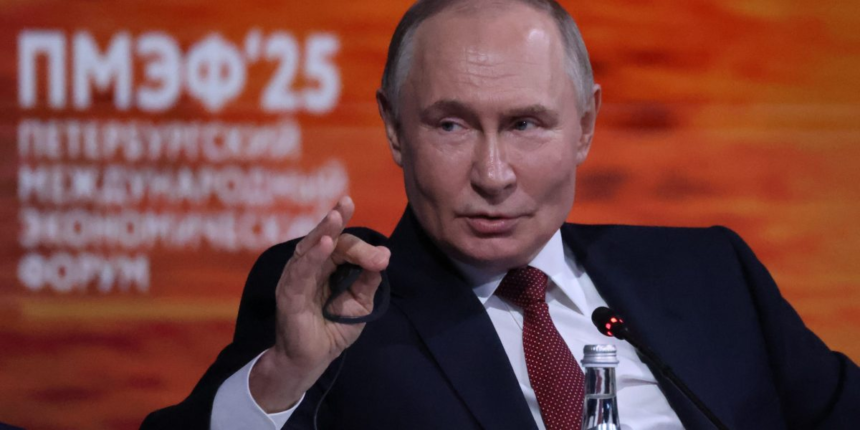Reshetnikov’s declaration confirmed what several economists foresaw earlier this year: Russia’s high-spending war economy, after years of defying predictions of imminent recession, is finally running into the hard limits of labor, productivity, and inflation.
Russia’s 2022 invasion of Ukraine prompted a slew of sanctions by Western nations, and the near-total departure of Western companies from the nation. But despite predictions of its imminent demise, the country’s economy has held up fairly well by pursuing what economists call “military Keynesianism,” fueling growth through massive defense-related fiscal spending. By pouring a record number of resources into the military-industrial complex, which reached a value of $167 billion last year, the Kremlin spiked industrial production, drove two consecutive years of GDP growth, and lifted wages across war-related sectors.
Russia’s military spending bubble has created what Elina Ribakova, economist at the Peterson Institute for International Economics describes as a game of musical chairs.
“Everybody’s making money. Suddenly, people are enjoying higher incomes, and can get a mortgage, or buy durables. It makes this war popular in a practical, morbid way. You want the music going,” she explains.
But, as Nicholas Fenton, associate director at the Center for Strategic and International Studies warns, “You can only kind of spend so much before you hit structural limits in the economy. And the big hang up for the Russian economy throughout this period has been the country’s chronic labor shortage.”
This spring, Russia’s manufacturing sector, an industry that also includes defense enterprises, suffered its steepest downturn in close to three years, dropping 2 points from February to March. Similarly, Russia’s industrial production growth hit a two-year low, increasing only 0.2% year-on-year.
Interest rates may be shifting, however: senior officials and Russian businessmen have repeatedly called for cuts to promote growth, and President Vladimir Putin has urged policymakers to strike a balance between fighting inflation and boosting growth.
Ultimately, for the country’s growth potential to change, the country would need to improve labor productivity, a difficult feat amid persisting sanctions and significant inflation, according to Alexander Kolyandr, senior fellow at the Center for European Policy Analysis.
“The war in the Middle East is actually pretty good for Putin, but that wouldn’t save the economy. It just means that the government may continue to maintain this policy of managed decline,” Kolyandr tells Fortune.
Ribakova agrees with Kolyandr. “We were sort of rubbing our hands as oil was going down because that’s the most effective sanction against Russia. And of course, now we’ve seen the prices pick up,” she says.
Russia’s oil exports, however, don’t provide a solution to the lack of foreign investments in the country and the total retreat of American companies. Even with President Donald Trump’s hands-off approach to diplomacy with the Kremlin, Charles Kupchan, senior fellow at the Council on Foreign Relations, sees the return of U.S. businesses to Russia as a key bargaining chip.
“Trump is saying to Vladimir Putin, ‘if you’re ready to make a deal and end this war and agree to a ceasefire in place, I can envisage a return of American companies to Russia. I can envisage the rehabilitation of Vladimir Putin,’” he says.









